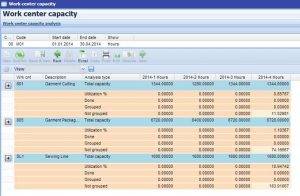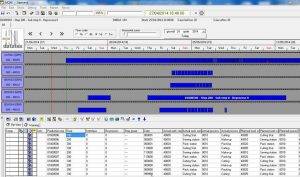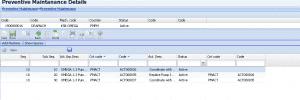The textile industry is one of the leading sectors in the economies of many countries. It employs billions of workers in thousands of companies all over the world. Due to its strategic importance, it attracts considerable public attention, as far as all its supply chain is concerned.
Wet processing, such as dyeing, finishing and printing, are mostly responsible for the spreading of chemical pollutants and the impoverishment of water resources. Hence, the energetic efficiency becomes an important issue to deal with which entails the need to reduce costs, as well as water resources used to finish the working process. This goal can be achieved by new technologies, which can monitor and reduce these wastes.
The NOW software, created and distributed by Datatex, helps companies to be environmentally friendly and monitors every step of their working process.
First, it is fundamental to clarify the idea of “product” and its evolution trough the PDM module (Product Data Management) which manages the entire life cycle, revisions, technical improvements and costs calculation. These latter become Bill of Material, Routing and Recipe, estimating all raw materials, energy, water and everything necessary for the production phase.
The PDM module explicates the need for sub-contracted work, using suppliers.



The following are examples from the Work Center Capacity module, used to level out all the workloads and minimize waste.


Moreover, Now includes a module that gathers all the flaws and optimize the cuts, to reduce the waste.

Textile industries are responsible of 10% of the world’s amount of greenhouse gas emissions. Therefore, they should engage in an important change of their production model.
Indeed, the environmental issues awaked an increased sensitivity in companies and consumers, concentrating on problems related to waste of natural resources and energy. These should be reduced immediately in order to minimize their impact on our ecosystem.
The eco friendly company, should decrease the environmental impact of its own business, lower its consumption and create products which will be disposed following this main goal.
This purpose can be achieved by the company using the Datatex Scheduling Module, through which it is possible to check resource occupation during the production process in order to optimize their usage.
Planning based on calculation of warehouse stocks and the oversupply of previous processing, allows to cut minimize work in process according to production lead time and accurate requirements.
NOW optimizes the requirement of raw materials and sub- contracted work, by calculating in real time the estimated costs or each production order.
The lot and product traceability (production and purchase from suppliers) provides all the required information in order to obtain the strictest of environmental certification. Through the real cost calculation module, we can determine the offset from the original budget for further controls of execution accuracy. Moreover, NOW detects the actual consumption of water, raw materials and energy, ensuring proper and standard operation of the production processes.
Along with the Plant Maintenance module and the Predictive Maintenance skills, NOW helps to improve the plants’ efficiency and reduce machine run times.

A specific NOW module can assure a certain quality standard level of your products, causing a higher customer satisfaction and improving production activities of your company.
Indeed, with the Quality Assurance Module, you can run tests and check if the consumption targets have been met.

This module helps control the respect of the quality standards. and to take corrective actions. Below are some examples of activities performed by the NOW Quality Assurance module:
-Quality Level Management of incoming, outgoing and work in process materials
-Setting of quality standards for single products and for groups created for customers or suppliers
-Quality Assurance Test: parameters and methods to be used during these tests
-Setting group headers and standards for the quality check: in order to gather all these standards for a specific item or customer
-Quality control standards according to the type of product, production and final consumer
-Entering of all actual data related to Quality assurance checks, performed by the user
-Quality department’s integrated operations create a request for quality checks in all company’s departments, clarify all the actual results and compare them with quality standards.
Hence, Companies are committed to removing or reducing the usage of dangerous substances, by opting for alternative and effective solutions. This change begins to take shape, but much remains to be done in order to get real alternatives, like replacing completely the chemical substances used today. It is also important to think about how they should be spread across all the textile world, in order to become the new “norm” for each company.
Sustainability is also linked to other important aspects of each company’s life; that is workers health, rights and a constant push towards Research and Development. Companies should feel responsible for the context where they operate and for people involved considering all stakeholders.
In order to carry out a true switch towards environmental sustainability, the company should support a technological and organizational improvement process, using software (like NOW), able to manage the production as well as the product life cycle. This way it can use available tools to improve its own production activities and intelligently manage innovation, avoiding inefficiencies.
Modern technologies used by companies allow the declaration to the final consumer the source of origin of each component in the final product. Thanks to those technologies, like e ERP systems, customers can understand the full supply chain of a product, from the producer of raw materials to the final converter, just by reading a Tag on the garment. In doing so the consumer can acknowledge the commitment of all those companies which are really involved in a sustainable production.
So, to sum up, we can list all the strategic actions needed to become eco-friendly:
-Cooperate with suppliers
-Monitor all the supply chain
-Constant push towards innovation and reuse of raw materials
-Minimize the usage of water and manage the environmental impacts of products waste
-Minimize use of contamination substances.
-Take into consideration the relationship with local communities and with consumers. This can be achieved through an open and clear communication of the company’s values and a greater promotion of items recycling (e.g. bottles, paper….)
Needless to say, the eco-friendly switch cannot be quick and painless, many industries are involved in the production of dangerous and polluting substances. In order to make the real change we need to emphasize two important facts. Firstly, industries cannot carry on with the current production patterns, using perishable resources that will not be at our disposal forever. Secondly, consumers are much more aware of ecological sustainability and need full transparency of the company’s information.



